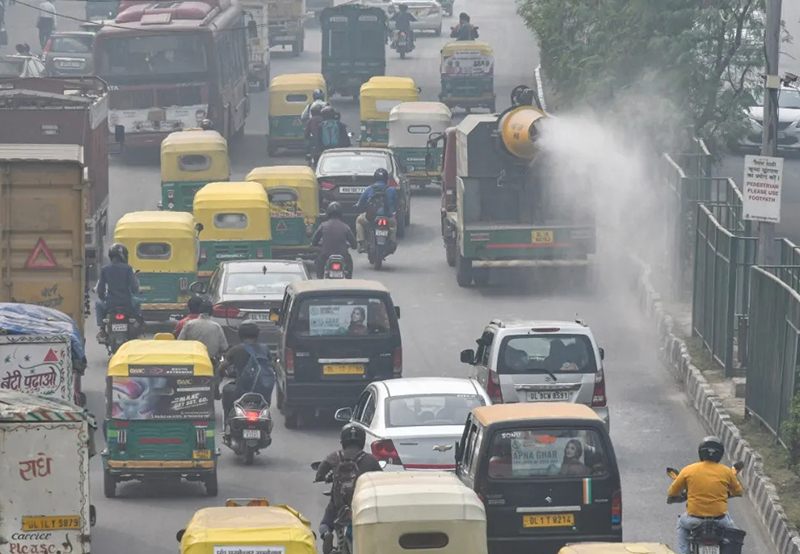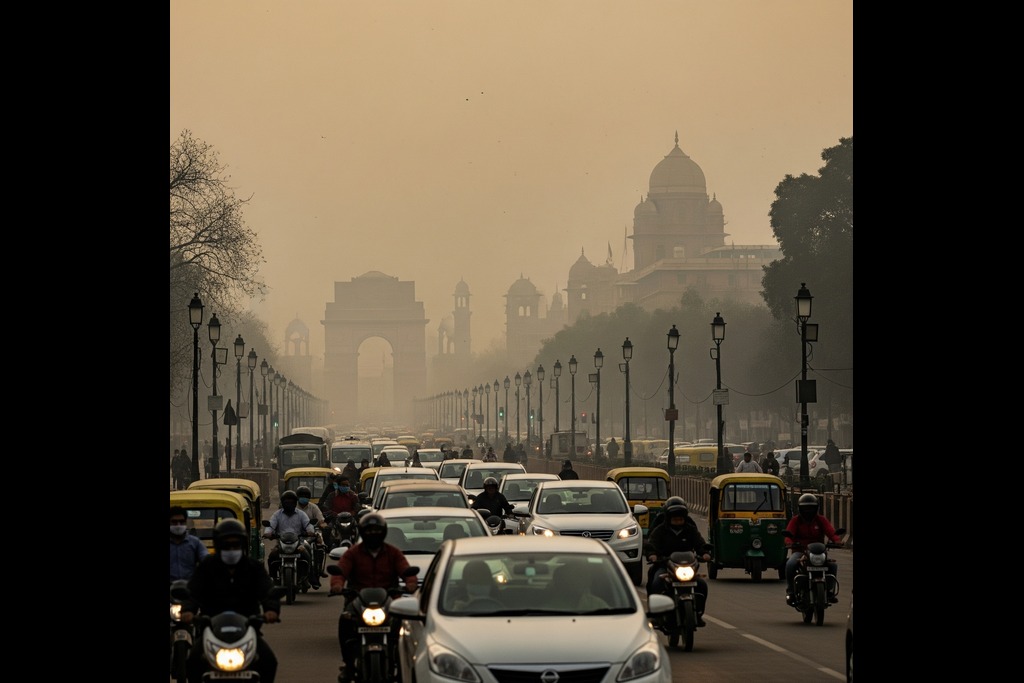Delhi Anti-Pollution Measures 2025: Are They Enough?
Delhi, India’s capital, is no stranger to choking smog, rising respiratory diseases, and global headlines calling it one of the most polluted cities in the world. Over the years, citizens and governments alike have grappled with this silent crisis. In 2025, the question on everyone’s mind is—are the anti-pollution measures in Delhi finally enough to tackle this toxic challenge?

This article explores the control measures of air pollution in Delhi, evaluates the effectiveness of Delhi pollution control steps, and delves into whether the existing anti-pollution laws and recent policies are genuinely making a difference.
A Brief Overview of Delhi’s Pollution Crisis
Every winter, the sky of Delhi goes hidden under a dense gray cloud cover. A toxic cocktail of vehicular emissions, industrial pollutants, construction dust, and seasonal stubble burning from neighboring states pushes the Delhi air pollution level to hazardous heights.
During the peak months, the Air Quality Index (AQI) crosses 400, on multiple occasions, and this is too much outside the safe range of 100. Regardless of all the years of interventions, the air pollution in the capital has not reduced, which caused constant outcry and lawsuits in the population.
What Are the Key Anti-Pollution Measures in 2025?
In 2025, several new and updated anti-pollution measures have been introduced by both the Delhi Government and the Central Government. This is a peak of what is being done to deal with the crisis:
1. Odd-Even Vehicle Scheme 4.0: The heavily hyped Odd-Even plan is back in 2025 in the stronger and more digitally connected form. The odd and even number car plates are alternated in the roads with the aim of minimizing vehicular emissions and traffic congestion.
To add to the effectiveness of the scheme, this year the government introduced real-time pollution monitoring via mobile applications and GPS-tracking of compliance.
2. Expansion of Electric Vehicle (EV) Infrastructure: Delhi has already reached more than 5,000 EV charging points, and electric vehicles subsidies have resulted in 35 percent surges in EV sales. Electric buses are becoming a fast growth industry in the school bus and government fleet marketplaces, which cuts diesel emissions significantly.
The push is also in line with the pollution prevention measures in Delhi as far as long-term sustainability is concerned.
3. Smog Towers and Air Purifiers: Smog towers, or large buildings that pump out soiled air and pump out filtered air, have been set up in over 25 strategic points, including Connaught Place, Anand Vihar and Rohini.
In addition, high-efficiency air purifiers have been made mandatory in government schools and hospitals to shield vulnerable populations from the Delhi air pollution level indoors.
4. AQI Real Time Monitoring and Warnings: An AI-based AQI control system has since been implemented that provides real-time updates to citizens, prompting such precautionary measures as closing schools or preventing some automobile traffic when the air is deemed unsafe.
It is in connection with the anti-pollution laws of Delhi i.e. Air Prevention and Control of Pollution Act, 1981 that requires the government to respond swiftly in health emergencies involving the people.
5. Construction Regulation and Dust Control: The Delhi Pollution Control Committee (DPCC) has put a stricter regulation on construction activities. It has now become mandatory on the part of the contractors to apply dust suppressants, wrap up construction materials, as well as set up water sprinklers.
There are penalties and fines on the spot to avoid breach which is part and parcel of the pollution control measures put up by Delhi.
6. Ban on Diesel Generators: Utilization of diesel generators has been fully prohibited during the period between October and February, particularly during residential and commercial buildings. This is in tandem with the Graded Response Action Plan (GRAP) where a seasonal response is invoked in the months of the peak pollution levels.
Understanding the Anti-Pollution Laws Governing Delhi
There is a robust legal framework which has been accompanied by policies which have changed. The major anti-pollution legislations in Delhi are:
- The Air (Prevention and Control of Pollution) Act, 1981
Authorizes the Central and State pollution control boards to check and regulate the air pollution. - The Environment (Protection) Act, 1986
Enables the government to make decisions, which enhance and safeguard the environment such as providing notices and standards. - Graded Response Action Plan (GRAP)
This plan, first introduced in 2017, pre-determines measures to take during different AQI levels, such as stopping construction and increasing public transportation during the conditions labeled as severe.
These are the main laws that Delhi is using in the pollution war and enforcing these legislations becomes difficult.
Are These Pollution Control Measures Working?
The million-dollar question: Are Delhi’s anti-pollution measures enough in 2025? The answer is both encouraging and complex.
Improved Data Shows Progress
According to data released by the DPCC and independent researchers, Delhi’s PM2.5 levels have shown a 15% improvement during the winter of 2024–25 compared to the same period in 2023. While still far from ideal, this indicates that control measures of air pollution in Delhi are having an impact.
Public Awareness Is Growing
Awareness campaigns, educational outreach in schools, and social media activations have led to increased public involvement. Citizens are now more likely to report illegal burning, use air purifiers at home, and follow AQI updates regularly.
But Challenges Remain
Despite progress, several obstacles continue to block significant improvement:
- Stubble Burning in Neighboring States
While not under Delhi’s direct control, crop residue burning in Punjab and Haryana contributes massively to the Delhi air pollution level. Inter-state cooperation remains inconsistent. - Weak Enforcement
While the anti-pollution laws exist, many polluters still find loopholes or evade penalties. Corruption, overburdened inspectors, and inadequate monitoring infrastructure are persistent issues. - Vehicular Congestion
With over 13 million registered vehicles, Delhi’s roads remain congested. The Odd-Even scheme, while helpful, is temporary. - Limited Green Cover
Urban development continues to shrink Delhi’s green lungs. Tree plantation drives are yet to make a tangible difference.
What More Can Be Done?
Delhi’s fight against pollution cannot be won with short-term fixes. The following long-term strategies can strengthen the city’s anti-pollution drive:
1. Inter-State Pollution Council: A permanent body involving Delhi, Punjab, Haryana, and Uttar Pradesh should coordinate anti-pollution measures, especially for seasonal crises like stubble burning.
2. Public Transport Revolution: High-speed metro lines, electric buses and last-mile connectivity require investment. The daily commuters can be given incentives to change to other means of transportation.
3. Eco-Friendly Urban Planning: Emissions could be offset by compulsory green rooftops, vertical gardens and solar-powered buildings. Sustainability is one of the pillars that should be embedded in the Delhi Master Plan.
4. Stronger Monitoring and Penalties: Law enforcement can be facilitated through AI and drone use in real-time to track emissions. The government must also ensure swift penalties for violators of Delhi pollution control steps.
5. Citizen Incentive Programs: By providing rewards to citizens in exchange for using EVs or growing trees or taking part in awareness programs, a culture of shared responsibility can be established.
Conclusion: A City in Transition
In 2025, Delhi is showing signs of transformation. While challenges persist, there’s hope in action. From improved infrastructure to citizen engagement and legal reforms, Delhi’s anti-pollution measures are evolving—albeit slowly.
The success of the control measures of air pollution in Delhi depends not just on government policies but on collective civic action. The path ahead is long, but with consistent efforts and genuine political will, Delhi can breathe easier in the years to come.
Frequently Asked Questions (FAQs)
Major contributors include vehicular emissions, industrial pollutants, construction dust, and seasonal stubble burning.
The key laws include the Air Act (1981), the Environment Protection Act (1986), and seasonal plans like GRAP.
Yes, Delhi’s PM2.5 levels have shown a 15% improvement compared to 2023, thanks to new Delhi pollution control steps.
Use public transport, switch to EVs, avoid burning waste, and report violations using official apps.












